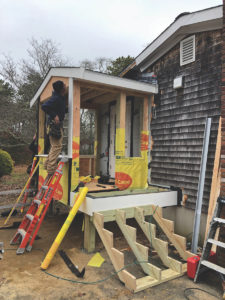The Question: We’ve been saving to make some home improvements and want to go forward. But we’re concerned about the economy and want to make sure we do this intelligently. What improvements should we prioritize for the best return on our investment?
Renovations can make us happier in the places we call home. When you do this work for a living, seeing people enjoy the changes they’ve made is the most satisfying part of the process. But it is true that some updates can add more value than others when it’s time to sell or refinance. As you decide on priorities, it’s helpful to consider what kind of return you might expect before you begin a remodeling project.

Some of the best home renovations you can do for your money may be surprising. Case in point: garage door replacement. The cost versus return on this is close to 97 percent, with an average garage door cost of $3,000. If yours is in bad condition or isn’t functional, it’s worth knowing that a good-looking garage door tops the list when it comes to getting cash back on your investment when you decide to sell your house.
Old, dilapidated siding can make even the nicest house look worn-out. For the average home, replacing 1,250 square feet of old siding will cost you around $16,000. This is an upgrade that may seem boring, but it reflects good maintenance and certainly improves “curb appeal.” A typical return on this investment is 75 percent.
Estimating the return on a kitchen remodel is more complex. This is a room you spend a lot of time in, cooking, entertaining friends, and sharing meals with your family. Boosting your enjoyment of it is obviously going to seem valuable to you no matter what the payoff down the road.
Here too, potential buyers do see the value of this kind of upgrade. But that is more likely when you focus on creating a modern-looking and functional kitchen that doesn’t go overboard.
That’s because, on average, you’ll recoup a little more than 80 percent of the cost of a minor kitchen remodel. In a remodeling project of this kind, you might replace appliances with new, more energy-efficient models, reface cabinets with new wood panels, install new countertops, replace hardware, install a new sink and faucet, add new flooring, and repaint.
Kitchen remodels that indulge in very specialized luxury features don’t often provide that same return. It’s easy to see why — not everyone will agree which elements are worth the splurge. In the same way, creating rooms with uses that are very specific doesn’t always pay off. Whether you want a sewing room or art studio, make sure it can easily gain a future identity as a spare bedroom.
One other good investment: adding a wooden outdoor deck. The average cost (based on a 16-by-20-foot deck, including a railing system with pressure-treated wood posts, railings, and balusters) is approximately $20,000. This feature can hold more than 75 percent of its value come sale time.
This list shows that the return on a renovation investment is not directly correlated with the size of the project. Both big and small changes can make an impact. And prioritizing carefully means considering two kinds of value. First, how you will experience the benefit as you live in the house, and second, how likely it is that your decision will pay off in dollars.
This week’s Dovetail Joint question is answered by Tim Klink, founder of Coastal Custom Builders in Eastham. Keep sending your questions and we’ll find more good answers.



